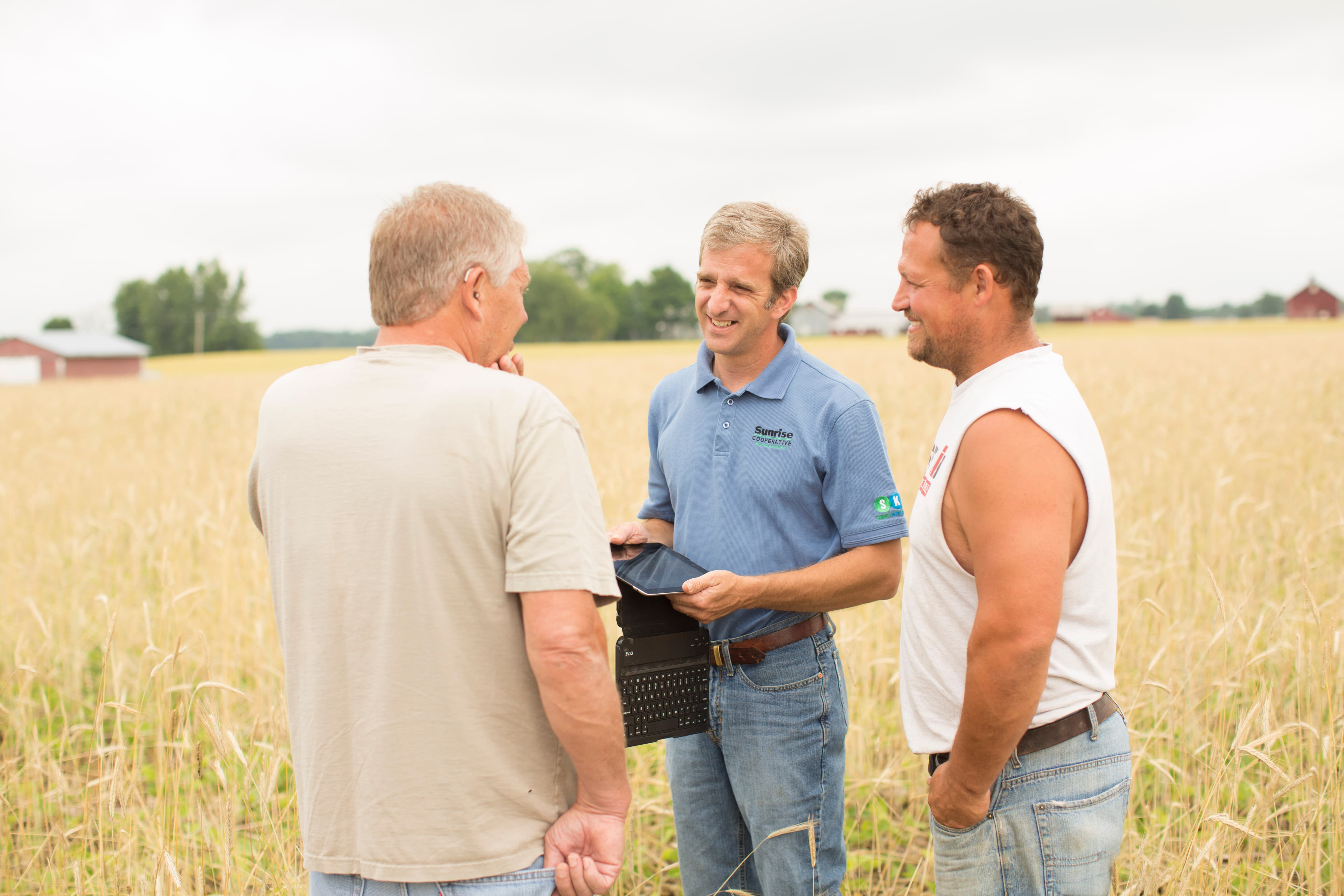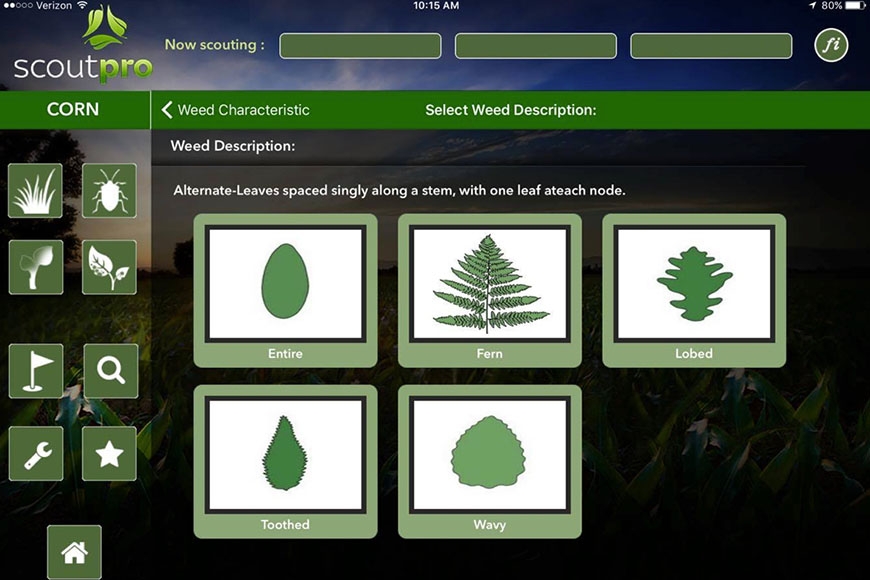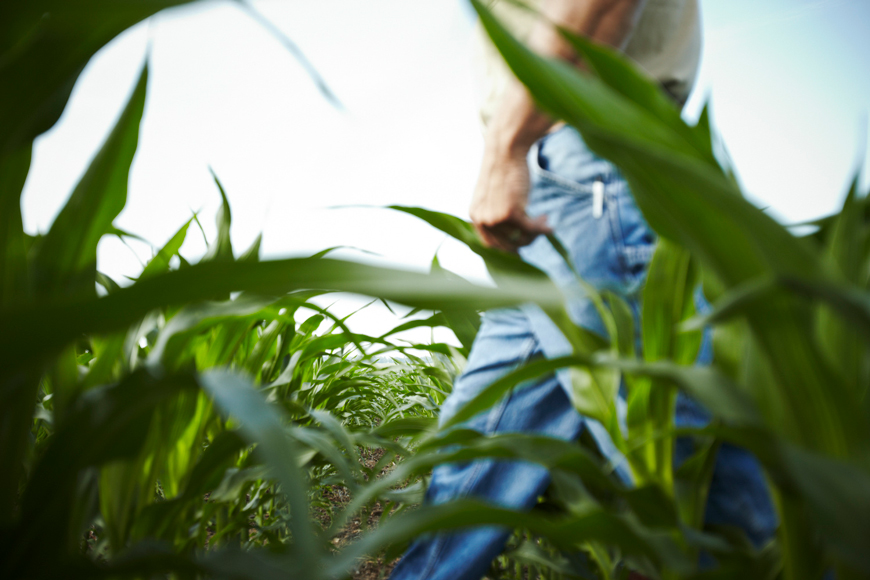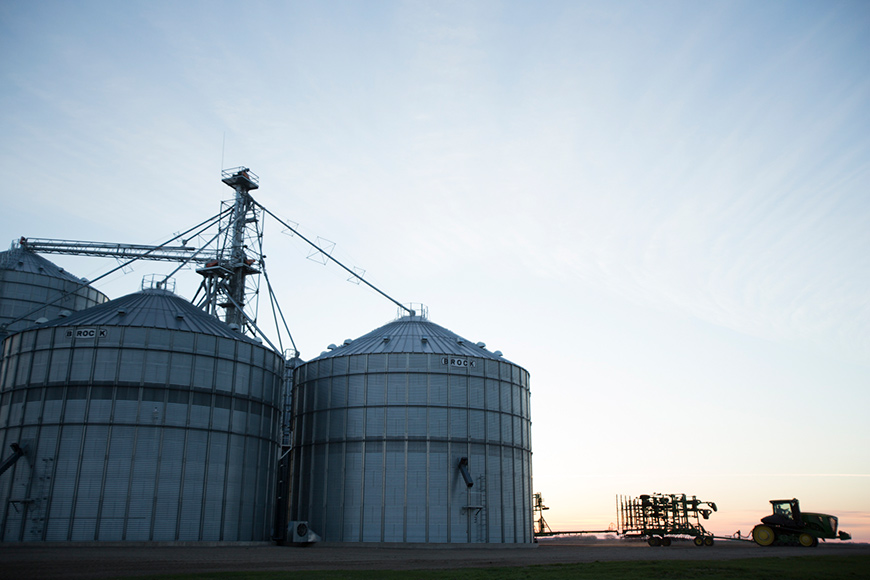Keeping Nutrients Where They Belong

As a farmer, you know that proper nutrient management plays a major role in water stewardship and optimal crop production.
At Sunrise Cooperative in Fremont, Ohio, we know that, too. And with the help of cutting-edge ag technology tools, we are helping safeguard waterways from nutrient runoff while partnering with farmers like you to increase nutrient- and water-use efficiency and to optimize crop health.
Nutrient management and water quality
Whether it’s the Gulf of Mexico hypoxic zone or the hazardous algae bloom in the West Lake Erie Basin, Sunrise Cooperative is affected, because our customer-owners live and farm in both watersheds.
Of course, nitrogen, phosphorus and other nutrients have the potential to improve yield and ROI. But you know better than anyone that more nitrogen applied at an inefficient time does not always mean more bushels at harvest.
Efficient nutrient management helps protect water quality by minimizing nutrient escape into waterways on or near your fields. It also saves you money with reduced fertilizer costs and improves soil quality by increasing nutrient retention.
How this works
Farmers and retailers have numerous waterbodies to keep an eye on. Algae overgrowth has been occurring every summer along Lake Erie’s western shores, and nutrient-dense areas of the Gulf of Mexico create “dead zones” where fish and plant life cannot survive. Local agriculture operations, along with non-agriculture sources, have been cited as contributors to these situations.
Sunrise’s Precision Solution team incorporates state-of-the-art technology in its approach to water and land stewardship. The team is using precision farming tools in a proactive game plan for using the right amount of crop nutrients and putting them where they belong — in the soil and out of waterways.
Tech innovations
One new solution to leverage in our nutrient stewardship efforts is remote sensing and crop modeling technology, like WinField United’s recently launched R7® Field Forecasting Tool. The Field Forecasting Tool is particularly valuable because it provides nitrogen and potassium tracking, which is different from most crop modeling programs that only address nitrogen.
Perhaps the tool’s biggest benefit is its calibration to tissue and soil sampling programs adjusting to in-season measurements, which increases the accuracy of calculations. Tissue sampling identifies nutrient concentrations in plants, providing a crop health snapshot. Combining this with geo-referenced soil samples provides site-specific information on soil requirements to help define the right place, the right nutrient source and the right rate, for more targeted use of resources and more efficient operations.
Talk with your agronomist about how the Field Forecasting Tool and other precision solutions can help enhance your nutrient management and conservation efforts during the 2018 crop year.
At Sunrise Cooperative in Fremont, Ohio, we know that, too. And with the help of cutting-edge ag technology tools, we are helping safeguard waterways from nutrient runoff while partnering with farmers like you to increase nutrient- and water-use efficiency and to optimize crop health.
Nutrient management and water quality
Whether it’s the Gulf of Mexico hypoxic zone or the hazardous algae bloom in the West Lake Erie Basin, Sunrise Cooperative is affected, because our customer-owners live and farm in both watersheds.
Of course, nitrogen, phosphorus and other nutrients have the potential to improve yield and ROI. But you know better than anyone that more nitrogen applied at an inefficient time does not always mean more bushels at harvest.
Efficient nutrient management helps protect water quality by minimizing nutrient escape into waterways on or near your fields. It also saves you money with reduced fertilizer costs and improves soil quality by increasing nutrient retention.
How this works
Farmers and retailers have numerous waterbodies to keep an eye on. Algae overgrowth has been occurring every summer along Lake Erie’s western shores, and nutrient-dense areas of the Gulf of Mexico create “dead zones” where fish and plant life cannot survive. Local agriculture operations, along with non-agriculture sources, have been cited as contributors to these situations.
Sunrise’s Precision Solution team incorporates state-of-the-art technology in its approach to water and land stewardship. The team is using precision farming tools in a proactive game plan for using the right amount of crop nutrients and putting them where they belong — in the soil and out of waterways.
Tech innovations
One new solution to leverage in our nutrient stewardship efforts is remote sensing and crop modeling technology, like WinField United’s recently launched R7® Field Forecasting Tool. The Field Forecasting Tool is particularly valuable because it provides nitrogen and potassium tracking, which is different from most crop modeling programs that only address nitrogen.
Perhaps the tool’s biggest benefit is its calibration to tissue and soil sampling programs adjusting to in-season measurements, which increases the accuracy of calculations. Tissue sampling identifies nutrient concentrations in plants, providing a crop health snapshot. Combining this with geo-referenced soil samples provides site-specific information on soil requirements to help define the right place, the right nutrient source and the right rate, for more targeted use of resources and more efficient operations.
Talk with your agronomist about how the Field Forecasting Tool and other precision solutions can help enhance your nutrient management and conservation efforts during the 2018 crop year.





